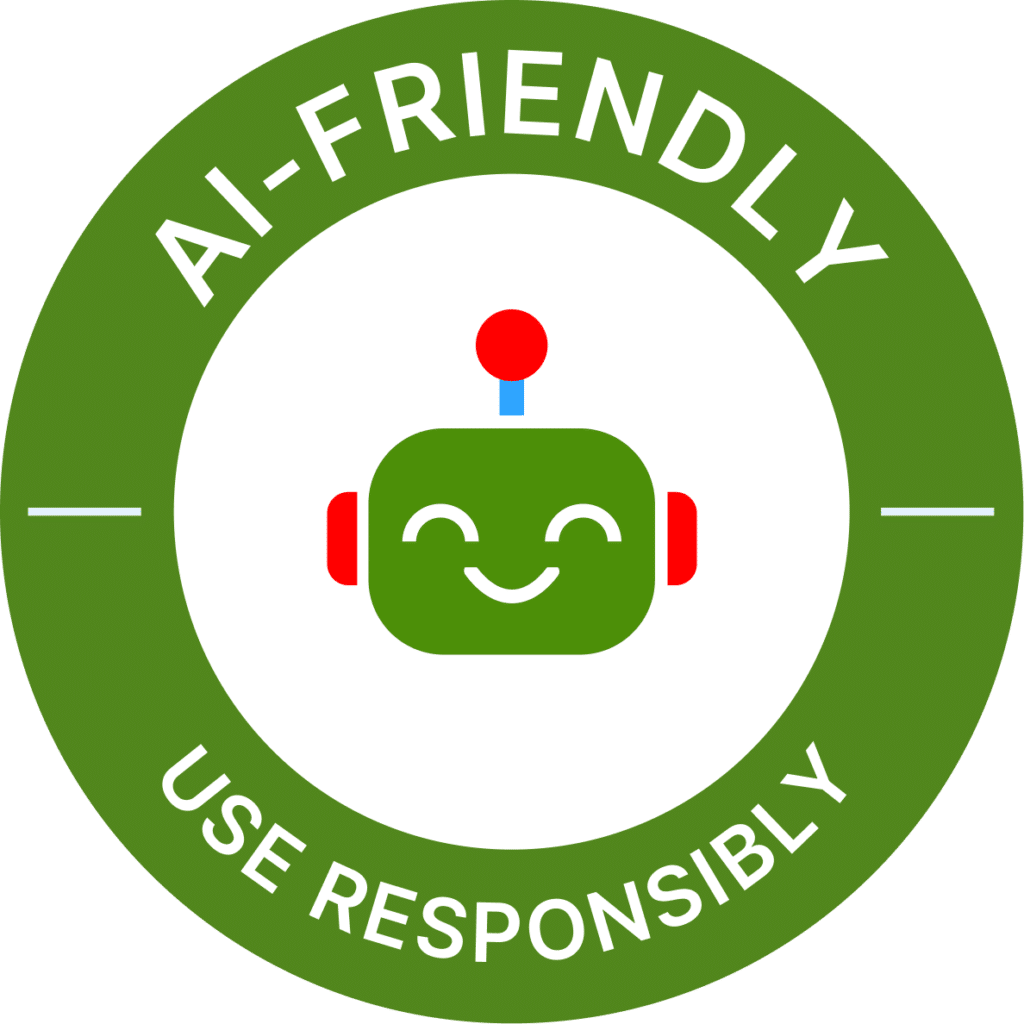ARTIFICIAL INTELLIGENCE AND GENERATIVE/EMERGING TECHNOLOGIES
Artificial intelligence, generative, and emerging technologies: A guide for the classroom
Many units across campus are meeting to discuss the possibilities and challenges of predictive technologies at Marquette, including the Center for Teaching and Learning. As we all work within our departments and across colleges to make sense of how this technology is affecting Marquette faculty and students, we want to make sure that faculty have access to relevant resources to help them discover what makes most sense for them to know and use.
This semester, we encourage everyone to educate themselves about this technology and start giving some thought to how it works with their teaching practices. The university does not plan to make a uniform policy regarding predictive technologies; the technologies are too new and rapidly developing. We think that the desire of the university will be to provide evidence-informed suggestions for syllabus language at the start of the 2023-2024 school year.
On this page, we will provide different information and opinions about predictive technologies and teaching. If you have materials that you think would benefit others across campus, please send that information to: ctl@marquette.edu. We will regularly spotlight different uses of this technology as well as different perspectives on it from a variety of people on campus throughout the semester.
Talking AI at Marquette
February 2024 Milwaukee Journal Sentinel interviews several Marquette faculty on their viewpoints regarding AI
Spring 2023 worship, courtesy of Dr. Brian Spaid, Manoj Babu, Melissa Shew, Dr. Jen Maney and other workshop participants.
AI and Your Classes – Opening Presentation by Dr. Melissa Shew and Dr. Jacob Riyeff
Check out this excellent resource from Gettysburg College
Communicating with Your Students About AI
|
|
The more you can set clear expectations and cultivate trust, the more likely you’ll be to a clear path together through what can feel like uncharted territory.
Talking with and teaching your students how to interface with technology—whether that’s GenAI or another form of technology–is foundational to a teaching practice that will prepare students for the literacies they will need in their future, whether inside or outside the classroom.
- Providing students with clear zones of engagement with AI encourages them to adopt a mindset around engagement with AI that is context-dependent, teaching them that their interface with this– and any– technology is dynamic and requires flexibility in its appropriate use.
- Below are some recommended visual conventions (please feel free to cut and paste into your own documents) to signal to students how and when to appropriately use generative AI in your classes, whether this is an overall disposition or you want to consider differentiating this by assessment. PLEASE consider putting something like this right on your syllabus and talk about it up front and throughout the semester or even per each assessment! Sample Syllabus Language for the Use of AI in the Classroom. Download your own copy of the AI Visuals here.
- One Faculty Perspective: Opening Up About AI: A Conversation with Students: Sellers-García, Boston College, reflects on what she learned from talking to her students about AI and rethinking some of her assignments.
|
 |
AI-FREE ASSIGNMENT | No AI use allowed
- For learning to happen in this assignment, it's necessary to do your own thinking without AI assistance.
|
 |
AI-LIMITED ASSIGNMENT | You can use AI within Guidelines
You can use AI within the guidelines provided in the assignment. Examples include:
- Ideation and Research (AI can be used to help generate ideas, organization and information gathering)
- Limited Word Usage (AI language can be inserted but cited within an assignment)
|
 |
AI-FRIENDLY ASSIGNMENT | Use Responsibly
You can use AI in this assignment at will, but it should be cited. See this MLA resource for guidance.
|
|
Update 7/26/2024
Also, please note that “writing assistance” services like Grammarly now incorporate chatbot features that function like ChatGPT or Gemini, so please flag this for your students if you are asking them not to use generative technologies in their assessed work. Download a copy of this table here.
|
|
ADDITIONAL RESOURCES
- Ideas for Teaching with AI
- As teachers at a Catholic university, Marquette instructors may also find helpful the careful and detailed study of artificial intelligence in today’s world (available for free download) disseminated by leading scholars in the area under the auspices of the Vatican’s Dicastery for Culture and Education. Special sections on relationality, education, healthcare, the economy, and stewardship of the earth are of particular relevance.
- Check out this curated Library Research Guide on the topic of the nature and context of emerging generative technologies (like AI, machine learning, and chatbots) from Marquette Digital Scholarship Librarian Maxwell Gray and Academic Integrity Director Jacob Riyeff. The guide is designed to help students and faculty discern how they may want to use or approach generative technologies like chatbots and related machine-learning technologies in their research, teaching, and learning.
|
Introductory Materials
 1.) What is ChatGPT, the most well-known predictive technology tool at this point?
1.) What is ChatGPT, the most well-known predictive technology tool at this point?
Watch: ChatGPT: Grading Artificial Intelligence's Writing, an 8-minute clip from CBS Sunday Morning (January 2023)
2.) What do I need to know this semester about this technology in my classes?
 Dr. Amber Young-Brice, Chair of Marquette’s university-wide Committee on Teaching and faculty in the College of Nursing, recommends this set of resources compiled by Cynthia Alby, coauthor of Learning That Matters: A Field Guide to Course Design for Transformative Education (Article link also here: ChatGPT: Understanding the new landscape and short-term solutions)
Dr. Amber Young-Brice, Chair of Marquette’s university-wide Committee on Teaching and faculty in the College of Nursing, recommends this set of resources compiled by Cynthia Alby, coauthor of Learning That Matters: A Field Guide to Course Design for Transformative Education (Article link also here: ChatGPT: Understanding the new landscape and short-term solutions)
3.) What other tools can I use to support student learning, especially in developing critical reading and writing skills?
 Dr. Lilly Campbell, Director of the Foundations in Rhetoric class required of all Marquette undergraduates, recommends that educators consider using educational tools like Perusall, a free and popular collaborative annotation tool embedded already in D2L, or Eli Review, a peer-feedback platform.
Dr. Lilly Campbell, Director of the Foundations in Rhetoric class required of all Marquette undergraduates, recommends that educators consider using educational tools like Perusall, a free and popular collaborative annotation tool embedded already in D2L, or Eli Review, a peer-feedback platform.
For help learning more about AI and generative technologies—what it is, where it comes from, why it’s here, how it works, how to use it, what to think about it, how to discuss using it with your students, how to design your assignments in light of it—please feel welcome to contact the CTL or Maxwell Gray, Digital Scholarship Librarian.
For questions regarding academic integrity please contact Jacob Riyeff.








 1.) What is ChatGPT, the most well-known predictive technology tool at this point?
1.) What is ChatGPT, the most well-known predictive technology tool at this point? Dr. Amber Young-Brice, Chair of Marquette’s university-wide Committee on Teaching and faculty in the College of Nursing, recommends
Dr. Amber Young-Brice, Chair of Marquette’s university-wide Committee on Teaching and faculty in the College of Nursing, recommends  Dr. Lilly Campbell, Director of the Foundations in Rhetoric class required of all Marquette undergraduates, recommends that educators consider using educational tools like Perusall, a free and popular collaborative annotation tool embedded already in D2L, or
Dr. Lilly Campbell, Director of the Foundations in Rhetoric class required of all Marquette undergraduates, recommends that educators consider using educational tools like Perusall, a free and popular collaborative annotation tool embedded already in D2L, or